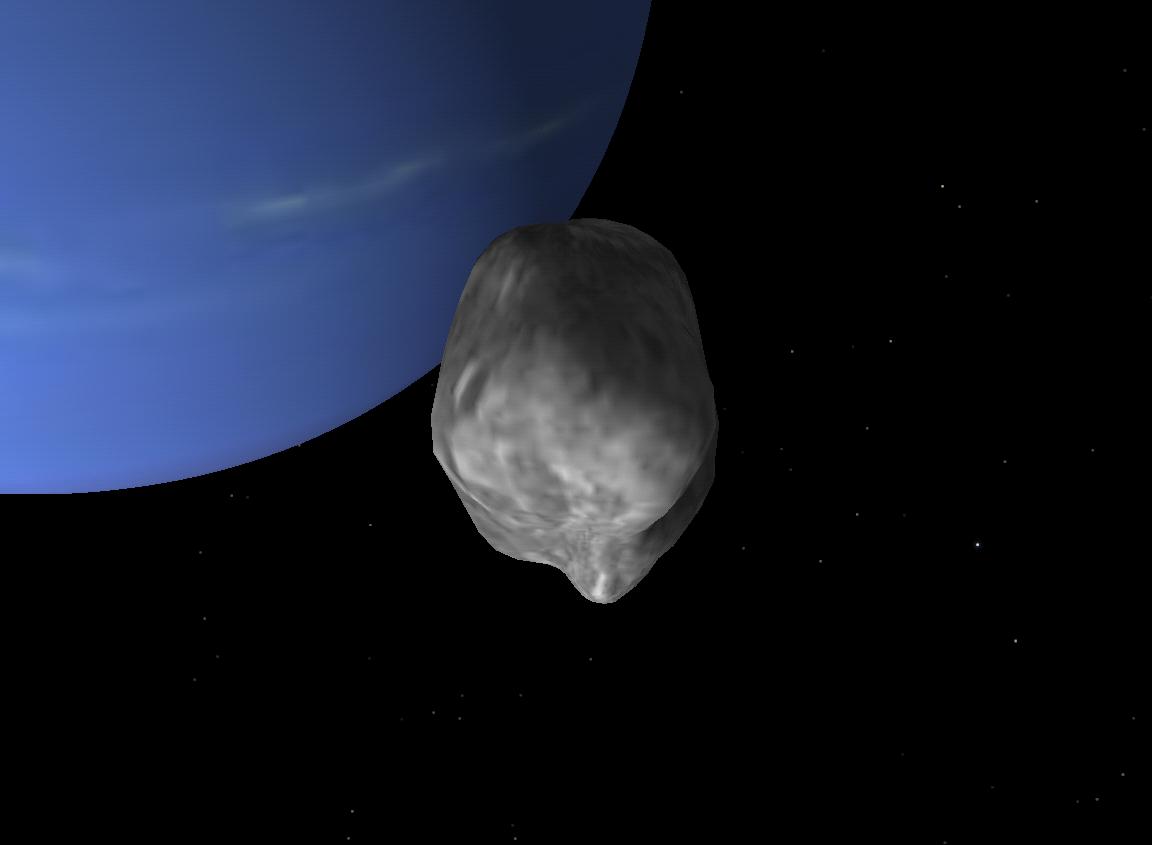Despina (moon) on:
[Wikipedia]
[Google]
[Amazon]
Despina , also known as Neptune V, is the third-closest

Despina Profile
b
NASA's Solar System Exploration
(by
inner
Interior may refer to:
Arts and media
* ''Interior'' (Degas) (also known as ''The Rape''), painting by Edgar Degas
* ''Interior'' (play), 1895 play by Belgian playwright Maurice Maeterlinck
* ''The Interior'' (novel), by Lisa See
* Interior de ...
moon of Neptune
Neptune is the eighth planet from the Sun and the farthest known planet in the Solar System. It is the fourth-largest planet in the Solar System by diameter, the third-most-massive planet, and the densest giant planet. It is 17 times ...
. It is named after Greek mythological
A major branch of classical mythology, Greek mythology is the body of myths originally told by the ancient Greeks, and a genre of Ancient Greek folklore. These stories concern the origin and nature of the world, the lives and activities of d ...
character Despoina
In Greek mythology, Despoina or Despoena (; el, Δέσποινα, Déspoina) was the daughter of Demeter and Poseidon and sister of Arion.
She was worshipped under the title ''Despoina'' ("the mistress") alongside her mother Demeter, one of t ...
, a nymph
A nymph ( grc, νύμφη, nýmphē, el, script=Latn, nímfi, label=Modern Greek; , ) in ancient Greek folklore is a minor female nature deity. Different from Greek goddesses, nymphs are generally regarded as personifications of nature, are ty ...
who was a daughter of Poseidon
Poseidon (; grc-gre, Ποσειδῶν) was one of the Twelve Olympians in ancient Greek religion and myth, god of the sea, storms, earthquakes and horses.Burkert 1985pp. 136–139 In pre-Olympian Bronze Age Greece, he was venerated as a ch ...
and Demeter
In ancient Greek religion and mythology, Demeter (; Attic: ''Dēmḗtēr'' ; Doric: ''Dāmā́tēr'') is the Olympian goddess of the harvest and agriculture, presiding over crops, grains, food, and the fertility of the earth. Although s ...
.
Discovery
Despina was discovered in late July 1989 from the images taken by the ''Voyager 2
''Voyager 2'' is a space probe launched by NASA on August 20, 1977, to study the outer planets and interstellar space beyond the Sun's heliosphere. As a part of the Voyager program, it was launched 16 days before its twin, ''Voyager 1'', on a ...
'' probe. It was given the temporary designation S/1989 N 3. The discovery was announced (IAUC 4824) on 2 August 1989, and mentions "10 frames taken over 5 days", implying a discovery date of sometime before July 28. The name was given on 16 September 1991.
Physical characteristics
Despina's diameter is approximately . Despina is irregularly shaped and shows no sign of any geological modification. It is likely that it is a rubble pile re-accreted from fragments of Neptune's original satellites, which were disrupted by perturbations fromTriton
Triton commonly refers to:
* Triton (mythology), a Greek god
* Triton (moon), a satellite of Neptune
Triton may also refer to:
Biology
* Triton cockatoo, a parrot
* Triton (gastropod), a group of sea snails
* ''Triton'', a synonym of ''Triturus' ...
soon after that moon's capture into a very eccentric initial orbit.
Orbit
Despina's orbit lies close to but outside of the orbit ofThalassa
Thalassa (; grc-gre, Θάλασσα, Thálassa, sea; Attic Greek: , ''Thálatta'') was the general word for 'sea' and for its divine female personification in Greek mythology. The word may have been of Pre-Greek origin.
Mythology
According t ...
and just inside the Le Verrier ring and acts as its shepherd moon. As it is also below Neptune's synchronous orbit A synchronous orbit is an orbit in which an orbiting body (usually a satellite) has a period equal to the average rotational period of the body being orbited (usually a planet), and in the same direction of rotation as that body.
Simplified meanin ...
radius, it is slowly spiralling inward due to tidal deceleration
Tidal acceleration is an effect of the tidal forces between an orbiting natural satellite (e.g. the Moon) and the primary planet that it orbits (e.g. Earth). The acceleration causes a gradual recession of a satellite in a prograde orbit away from ...
and may eventually impact Neptune's atmosphere, or break up into a planetary ring
A ring system is a disc or ring, orbiting an astronomical object, that is composed of solid material such as dust and moonlets, and is a common component of satellite systems around giant planets. A ring system around a planet is also known as ...
upon passing its Roche limit
In celestial mechanics, the Roche limit, also called Roche radius, is the distance from a celestial body within which a second celestial body, held together only by its own force of gravity, will disintegrate because the first body's tidal forc ...
due to tidal stretching.

Notes
References
External links
Despina Profile
b
NASA's Solar System Exploration
(by
Scott S. Sheppard
Scott Sander Sheppard (born 1977) is an American astronomer and a discoverer of numerous moons, comets and minor planets in the outer Solar System.
He is an astronomer in the Department of Terrestrial Magnetism at the Carnegie Institution for Scie ...
)
*
{{DEFAULTSORT:Despina (Moon)
Moons of Neptune
Astronomical objects discovered in 1989
Moons with a prograde orbit